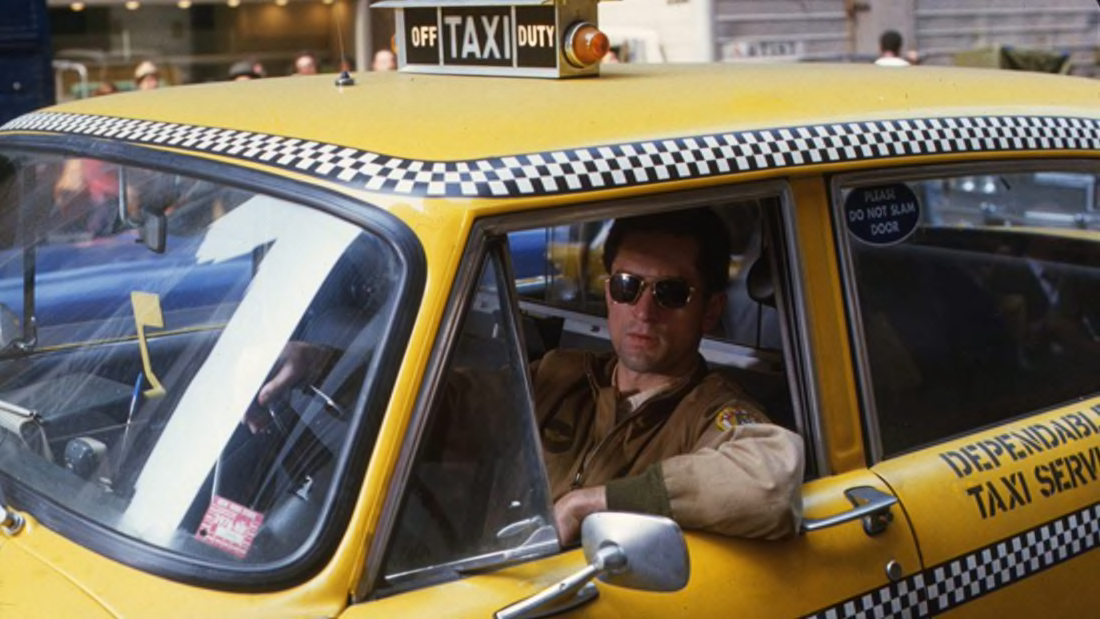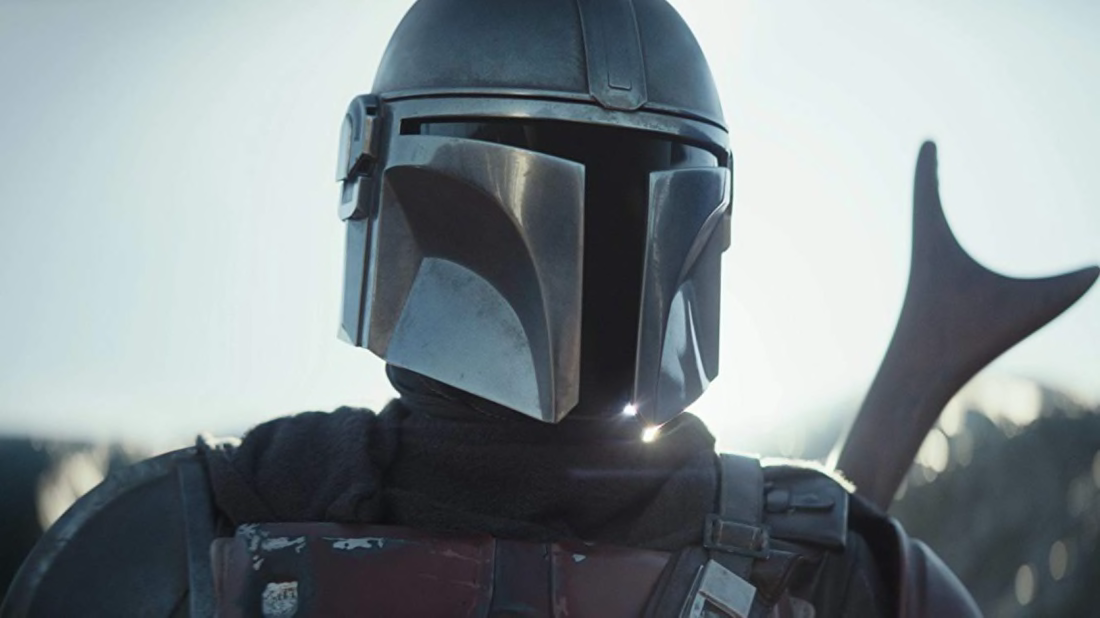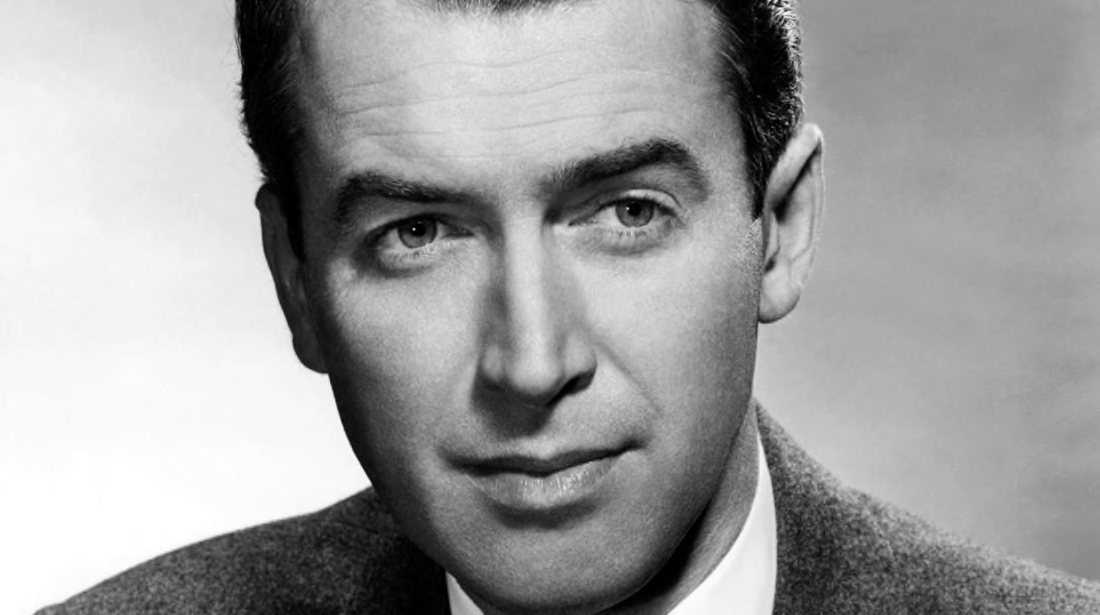The 21 Best Movies of the 1970s The 21 Best Movies of the 1970s – Mental Floss

By the end of the 1960s, the battle between “Old Hollywood” (Technicolor musicals, historical epics, and old-fashioned acting) and “New Hollywood” (youth-oriented stories full of sex and violence, political volatility, and realistic performances) was over, and New Hollywood had won. Game-changing films like Bonnie & Clyde, The Graduate, and Easy Rider—all released between 1967 and 1969—had shifted the Hollywood tide while the French New Wave had inspired the kids in film school (itself a new concept in the ’60s), and the 1970s proved a remarkably fertile time for the new batch of filmmakers that followed. Miraculously, studios gave these young directors a lot of creative freedom. The result? One of the best decades in all of movie history.
1. A Clockwork Orange (1971)
Stanley Kubrick was technically part of the older generation of moviemakers, but his groundbreaking films in the ’60s (including Dr. Strangelove and 2001: A Space Odyssey) had established him as part of the avant-garde. And yet A Clockwork Orange, his adaptation of Anthony Burgess’s dystopian novel, still surprised and shocked people with its violence, sex, and social commentary. The image of a juvenile delinquent having his eyes propped open to force him to watch films meant to recondition him remains indelible.
2. The Last Picture Show (1971)
It was fitting that as Old Hollywood faded away, an up-and-coming filmmaker like Peter Bogdanovich would make something set in the past, shot in nostalgic black-and-white, that depicted a town where the old ways were dying. Roger Ebert observed that The Last Picture Show “is above all an evocation of mood,” full of lovely melancholy as its young, restless characters in a moribund Texas town struggle with where to go and what to do next.
3. The French Connection (1971)
Gene Hackman, one of the most admired actors in Hollywood, was at the peak of his career in the 1970s: In addition to this cop thriller (for which he won an Oscar) and its sequel, he had I Never Sang for My Father, The Poseidon Adventure, The Conversation (which could also be on this list), Night Moves, Superman (he remains the quintessential Lex Luthor), and a hilarious turn as a blind man in Young Frankenstein. The French Connection cast him as a New York police detective chasing down drug smugglers, and director William Friedkin guided the film to a win for Best Picture of 1971.
4. and 5. The Godfather (1972) and The Godfather: Part II (1974)
You knew these would be on the list. It has become cliché to cite Francis Ford Coppola’s monumentally popular and lavishly praised mafia epics as the best the ’70s had to offer, but only the most stubborn of contrarians would deny the truth of it. With blockbuster performances by an impressive array of stars present and future—including Marlon Brando, Al Pacino, Robert De Niro, Robert Duvall, Diane Keaton, Talia Shire, and James Caan—and an epic story spanning several decades, Coppola created a saga that has inspired countless filmmakers (and gangsters).
6. Serpico (1973)
Al Pacino is another actor whose heyday was the ’70s; besides the Godfathers, we could mention The Panic in Needle Park, Scarecrow, and Dog Day Afternoon. He was nominated for an Oscar for his role as Frank Serpico, a real-life New York cop who exposed corruption within the police force, while director Sidney Lumet—who was always interested in social issues, as seen in movies like 12 Angry Men, Network, and The Verdict—brought the full force of his righteous indignation to the edge-of-your-seat story.
7. The Exorcist (1973)
After he scored with The French Connection, William Friedkin cemented his place in movie history with this colossally popular and monumentally frightening horror film about a girl with a demon inside her. It inspired fainting and vomiting; it made people think they were possessed; it became the first horror film nominated for Best Picture; it made Ellen Burstyn a star. And it’s still one of the most terrifying possession stories ever told.
8. Chinatown (1974)
If you can separate the art from the artist (in this case, director Roman Polanski), Chinatown is just about the closest thing we have to a flawless movie, with a screenplay by Robert Towne that’s taught in screenwriting classes. Reviving the dormant detective noir genre, Polanski gave Jack Nicholson a chance to shine as a nosy Los Angeles P.I. snooping around a land deal with sinister implications. Faye Dunaway is unforgettable in her shocking role, and the last line—”Forget it, Jake. It’s Chinatown”—is an all-time classic.
9. Blazing Saddles (1974)
Mel Brooks released two classic comedies in 1974, but this writer’s subjective opinion is that Blazing Saddles is funnier than Young Frankenstein. Co-written with Richard Pryor (who would have starred in it, too, except that Warner Bros. found him too unreliable), this Western spoof is often like a Looney Tunes short come to life—with the added bonus of mocking racists with gleeful abandon. Cleavon Little, Gene Wilder, and Madeline Kahn give hilarious performances.
10. The Texas Chain Saw Massacre (1974)
This low-budget horror flick, basically the godfather of the “teens go somewhere remote and get murdered” genre, isn’t nearly as bloody as its reputation suggests. That’s partly a testament to director Tobe Hooper’s ability to suggest ghastliness without actually showing it, and partly due to the fact that most of the film’s many imitators are drenched in gore. More than 45 years later, the film’s raw, nightmarish final 30 minutes are still horrifically effective.
11. Monty Python and the Holy Grail (1975)
Like Mel Brooks, the Monty Python gang employed many types of comedy in telling their medieval story: slapstick, wordplay, satire, meta-references, and a killer rabbit. Perfectly capturing the anarchic, freewheeling, peripatetic spirit of the group’s sketch comedy TV series, Monty Python and the Holy Grail often feels like a series of skits—but who cares when the skits are all so brilliant?
12. One Flew Over the Cuckoo’s Nest (1975)
The 1970s were a fantastic decade for Jack Nicholson, who appeared in 15 movies including Five Easy Pieces, The Last Detail, the aforementioned Chinatown, and One Flew Over the Cuckoo’s Nest—and those are just the ones that earned him Oscar nominations. He won for One Flew Over the Cuckoo’s Nest, in which he plays a non-insane man in an insane asylum who questions authority and tries to break people out of complacency, themes that still resonate today.
13. Jaws (1975)
Jaws invented the “summer blockbuster” as we know it (that season was previously considered a dead zone), rocketed Steven Spielberg to the A-list of young directors, and made millions of ordinary people sharkphobic. Jaws also happens to be an expertly made dramatic thriller, with superb editing by Verna Fields (whom Spielberg credited with saving the picture) and an instantly iconic musical score by John Williams.
14. Taxi Driver (1976)
New York City was a violent cesspool in the ’70s, and nobody captured it better than Martin Scorsese did in this jarring drama—it’s almost a horror film—about an unstable cabbie (Robert De Niro) who longs to clean up the sleazy streets. Long before “toxic masculinity” was a common phrase, Travis Bickle was taking women to porno movies on first dates and personifying the violent ends to which some men will go to get what they want.
15. Rocky (1976)
Watching the many, many sequels, it’s easy to forget that the original Rocky was more character drama than boxing movie, focused on a working-class schlub who just wants to go the distance, win or lose. Sylvester Stallone’s down-to-earth screenplay and natural performance were enhanced by the journeyman sensibilities of director John G. Avildsen, who later brought the same rousing spirit to The Karate Kid.
16. All the President’s Men (1976)
After the national trauma of Watergate and the disgrace of Richard Nixon’s resignation, Americans needed a film to sort it all out for them. Robert Redford and Dustin Hoffman, both already big stars, played household-name Washington Post reporters Bob Woodward and Carl Bernstein in a steady, methodical film directed by To Kill a Mockingbird producer Alan J. Pakula. With moral clarity and a thrilling story, All the President’s Men stands as the best and most important political film of the decade.
17. Network (1976)
Just as trenchant in this bicentennial year as All the President’s Men, Network (directed by Serpico‘s Sidney Lumet) satirized that most American of inventions: the television industry. Nearly every outrageous thing that happens in this depiction of a fictional broadcast network run by ruthless executives has since happened in real life, making the film even more potent now than it was then. And the performances by Faye Dunaway, William Holden, and Peter Finch are terrific fun.
18. Star Wars (1977)
George Lucas’s space fantasy, a sort of interstellar Western, elevated old good guys vs. bad guys tropes to the level of high (and highly successful) art. The effects of the Star Wars franchise on Hollywood and the world need not be recited here. What’s notable is that even if there had never been a sequel, spinoff, or toy tie-in, the original Star Wars would still stand as, well, an original.
19. Apocalypse Now (1979)
In the annals of movies whose behind-the-scenes stories were as troubled and disastrous as the stories they depicted, few rank higher than Francis Ford Coppola’s Apocalypse Now. But the result of a year of filming plagued by weather, sickness, and Marlon Brando’s unpreparedness was a movie that has only risen in people’s estimation since then, vividly depicting the insanity of the Vietnam War through the eyes of a rattled Martin Sheen as he searches for a rogue Army Special Forces officer.
20. Alien (1979)
Alien could be on any list of important movies for its famous advertising tagline alone: “In space no one can hear you scream.” Directed by Ridley Scott from a long-in-development screenplay by Dan O’Bannon, this sci-fi thriller about a killer E.T. in a spaceship is a masterpiece of tension and horror and chest-bursting. Look how many other films on this list influenced it: O’Bannon pitched it as “Jaws in space”; Scott called it “The Texas Chain Saw Massacre of science fiction”; and 20th Century Fox only gave it a greenlight because Star Wars had suddenly made outer space cool again. Whatever it took to get it going, the result was worth it.
21. Being There (1979)
A TV-obsessed simpleton stumbling his way into the higher echelons of political power sounds totally implausible … but that’s the premise of this genteel but sharp comedy directed by Hal Ashby, whose other films from this decade—Harold & Maude, The Last Detail, Shampoo, Bound for Glory, and Coming Home—could all be on this list. Peter Sellers’s lead performance, just like the movie, perfectly walks the line between the absurd and the sublime.

It seems that the highly anticipated Disney+ release did not go as smoothly as the company had hoped. Variety reports that the streaming service launched this morning, only to find its IT department being flooded with phone calls, tweets, and emails from angry users complaining of malfunctions.
Many customers took to social media to vent their frustration that they either couldn’t login into their account or couldn’t watch certain content.
i can hear netflix laughing in the background #DisneyPlus pic.twitter.com/2cJgDSTztd
— dania (@Iaylakeatings) November 12, 2019
The service did offer an explanation for all the technical issues via Twitter, posting, “The consumer demand for Disney+ has exceeded our high expectations. We are working to quickly resolve the current user issue. We appreciate your patience.”
The demand for #DisneyPlus has exceeded our highest expectations. We are so pleased you’re excited to watch all your favorites and are working quickly to resolve any current issues. We appreciate your patience.
— Disney+ (@disneyplus) November 12, 2019
Too bad a little Disney magic couldn’t help them with these tech glitches.
[h/t Variety]

For a good portion of the 20th century, actor James Maitland “Jimmy” Stewart (1908-1997) was one of Hollywood’s most popular leading men. Stewart, who was often called upon to embody characters who exhibited a strong moral center, won acclaim for films like Mr. Smith Goes to Washington (1939), Vertigo (1958), and It’s a Wonderful Life (1946). In all, he made more than 80 movies. Take a look at some things you might not know about Stewart’s personal and professional lives.
1. Jimmy Stewart had a degree in architecture.
Acting was not James Stewart’s only area of expertise. Growing up in Indiana, Pennsylvania, where his father owned a hardware store, Stewart had an artistic bent with an interest in music and earned his way into his father’s alma mater, Princeton University. There, he received a degree in architecture in 1932. But pursuing that career seemed tenuous, as the country was in the midst of the Great Depression. Instead, Stewart decided to follow his interest in acting, joining a theater group in Falmouth, Massachusetts after graduating and rooming with fellow aspiring actor Henry Fonda. After a brief turn on Broadway, he landed a contract with MGM for motion picture work. His film debut, as a cub reporter in The Murder Man, was released in 1935.
2. Jimmy Stewart gorged himself on food so he could serve the country in World War II.
Stewart was already established in Hollywood when the United States began preparing to enter World War II. After the draft was introduced in 1940, Stewart received notice that he was number 310 out of a pool of 900,000 annual citizens selected for service. The problem? Stewart was six foot, three inches and a trim 138 pounds—five pounds under the minimum weight for enlistment. So he went home, ate everything he could, and came back to weigh in again. It worked, and Stewart joined the Army Air Corps, later known as the Air Force.
3. Jimmy Stewart demanded to see combat in the war.
Thanks to his interest in aviation, Stewart was already a pilot when he went to war; he received additional flight training but wound up being sidelined for two years stateside even though he kept insisting he be sent overseas to fight. (He filmed a recruitment short film, Winning Your Wings, in 1942, which was screened in theaters in the hopes it could drive enlistment.) Finally, in November 1943, he was dispatched to England, where he participated in more than 20 combat missions over Germany. His accomplishments earned him the Distinguished Flying Cross with two Oak Leaf clusters, among other honors, making him the most decorated actor to participate in the conflict. After the war ended, he returned to a welcome reception in his hometown of Indiana, Pennsylvania, where his father had decorated the courthouse to recognize his son’s service. His next major film role was It’s a Wonderful Life.
4. Jimmy Stewart kept his Oscar in a very unusual place.
After winning an Academy Award for The Philadelphia Story in 1940, Stewart heard from his father, Alex Stewart. “I hear you won some kind of award,” he told his son. “What was it, a plaque or something?” The elder Stewart suggested he bring it back home to display in the hardware store. The actor did as suggested, and the Oscar remained there for 25 years.
5. Jimmy Stewart starred in two television shows.
After a long career in film through the 1940s, 1950s, and 1960s, Stewart turned to television. In 1971, he played a college anthropology professor in The Jimmy Stewart Show. The series failed to find an audience, however, so was short-lived. He tried again with Hawkins in 1973, playing a defense lawyer, but that show was also canceled. (Stewart also performed in commercials, including spots for Firestone tires and Campbell’s Soup.)
6. Jimmy Stewart hated one version of It’s a Wonderful Life.
While Stewart had just as much affection for It’s a Wonderful Life as audiences, one alternate version of the film annoyed him. In 1987, he sent a letter to Congress protesting the practice of colorizing It’s a Wonderful Life and other films on the premise that it violated what directors like Frank Capra had intended. He described the tinted version as “a bath of Easter egg dye.” Putting a character named Violet in violet-colored costumes, he wrote, was “the kind of obvious visual pun that Frank Capra never would have considered.” Stewart later lobbied against the practice in person.
7. Jimmy Stewart published a book of poetry.
In 1989, Stewart authored Jimmy Stewart and His Poems, a slim volume collecting several of the actor’s verses. Stewart also included anecdotes about how each one was composed. His best known might be “Beau,” about his late dog, which Stewart read to Johnny Carson during a Tonight Show appearance in 1981. By the end, both Stewart and Carson were teary-eyed.
8. Jimmy Stewart has a statue in his hometown.
For Stewart’s 75th birthday in 1983, his hometown of Indiana, Pennsylvania honored him with a 9-foot-tall bronze statue. Unfortunately, the statue wasn’t totally ready in time for Stewart’s visit, so they presented him with the fiberglass version instead. The bronze statue currently stands in front of the county courthouse, while the fiberglass version was moved into the nearby Jimmy Stewart Museum.
Let’s block ads! (Why?)

